Seven Churches of Revelation: Open the Scroll on These Ancient Sites!
What are the Seven Churches of Revelation? Can you visit them today? Yes, you can. In fact, they are some of Turkey’s best ancient sites!
The disciple and Gospel writer John wrote his famous Book of Revelation, according to tradition, on the Greek island of Patmos close to the Turkish coast. The book includes addresses to the Christian communities in each of these cities across the region, covering their virtues, failings, and words of exhortation. Each of these churches faced issues specific to their context. Read the messages to the Seven Churches here.
Do you want to know what swords symbolize? Why did John the Evangelist refer to Pergamum as the home of the “throne of Satan”? How might your trade guild lead you to peer pressure? These are just some of the questions our CEO, Dr Meg Ramey, answers when she serves as scholar on the “Seven Cities of Revelation” educational travel program. The specific messages sent to each group of early Christians reflect their context and even the history of their cities, and bring these ancient sites and their inhabitants to life.
In the meantime, here’s what you can expect if you plan a trip to visit these wonderful ancient sites. They are in the order in which they appear in Revelation, so you can work out the best sequence for your own travels.
Check current opening times and any closing dates via the national website for museums and cultural sites here. If you plan to visit several sites you can buy a Museum Pass that could save you a lot – it’s valid for all sites in a set region or for all government-managed sites across Turkey, which is a great deal.
1. Ephesus
In the Roman period, Ephesus was home to approximately 200,000 and was the 4th largest in the Empire. Ephesus benefited both from the harbor that enabled trade and as a focus of the Artemis cult. Throngs of religious pilgrims came to visit that wonder of the ancient world (Yes, really! The Temple of Artemis was one of Pliny’s Seven Wonders). Now it is one of the most spectacular archaeological sites in the world.
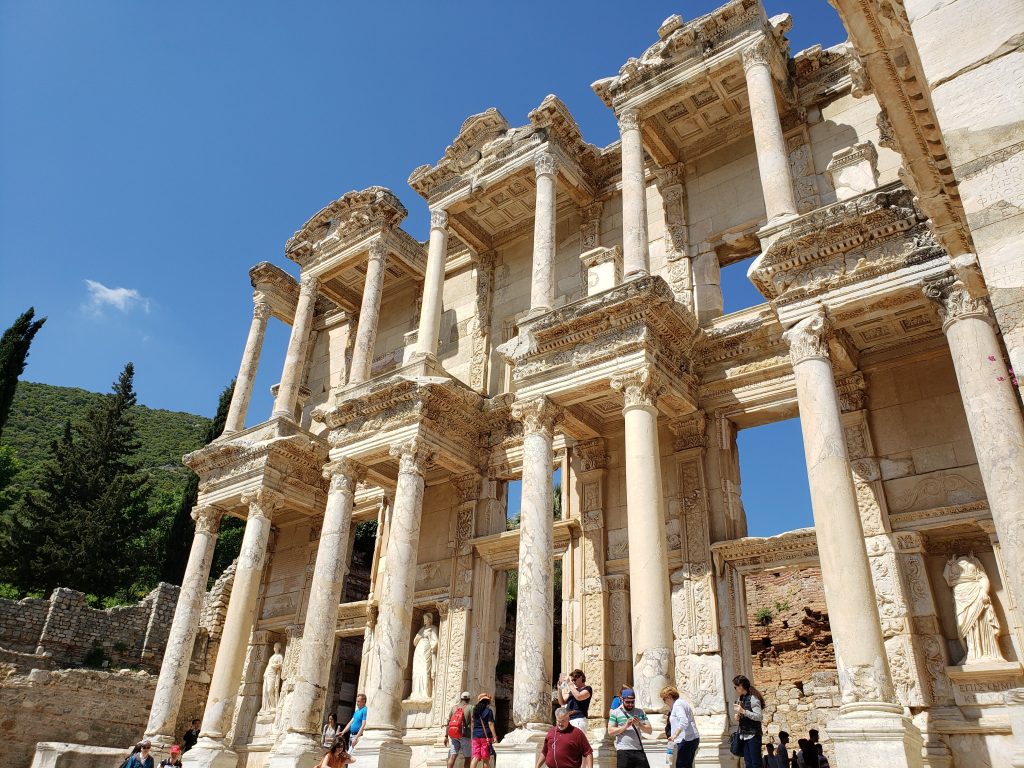
The Library of Celsus was part of a complex built in the early 2nd century and its iconic façade has been restored. You can imagine walking up to the building from the ancient city! Have you visited a place where you could walk in the footsteps of the ancients? Below, people from this century walk along roads used two thousand years ago.
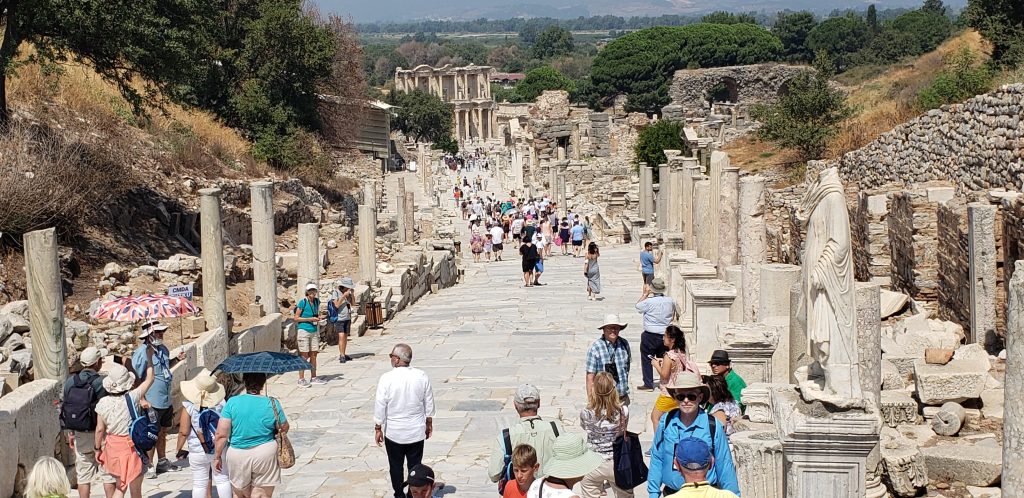
When you visit you can traverse Curetes St, one of the central sights of a visit to Ephesus. This site had successive Hellenistic and Roman settlements and was an outstanding example of a Roman port city with a sea channel and harbor basin into which the Apostle Paul sailed. He lived and ministered here for 2-3 years after a riot in the Great Theater, which we can still visit today. Excavations have revealed other grand monuments of the Roman Imperial period including marble-paved roads, terrace homes of the elite, Roman Baths, the Celsus Library, and more. Today, Ephesus is also one of the UNESCO World Heritage Sites.
Terraced Houses
For an extra fee, visit the Terraced House complex, excavated dwellings with indoor plumbing, marble decor, graffiti and some vivid and evocative frescoes.
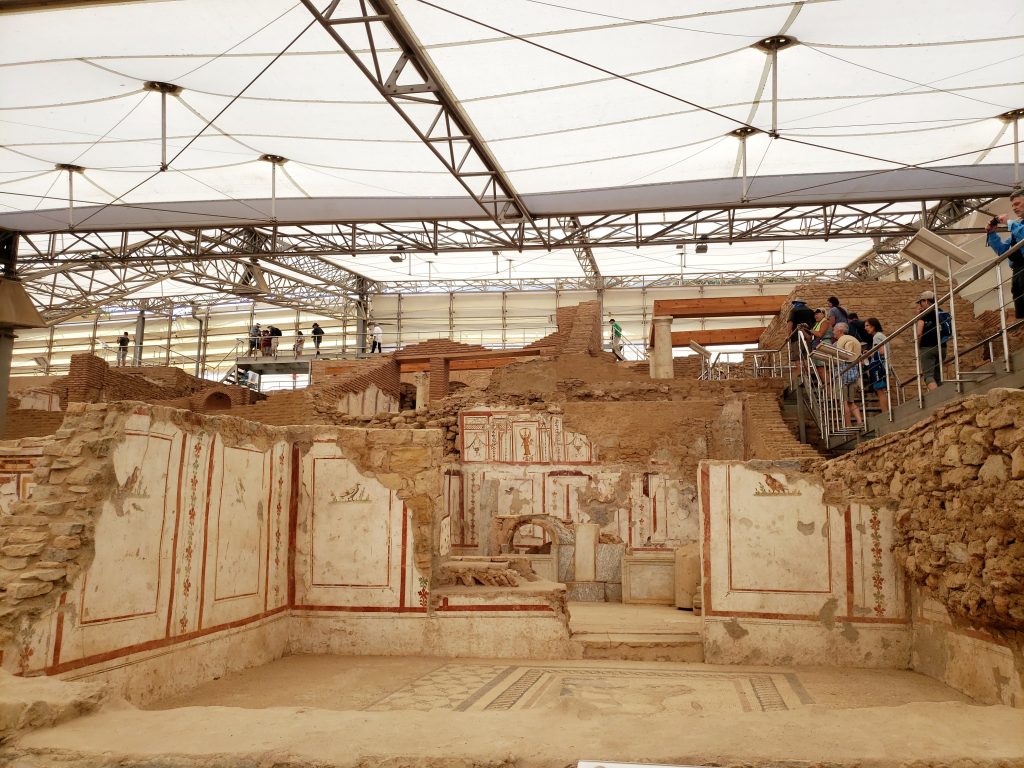
Mary’s Home
It’s not just the archaeological site or the connection to the Seven Churches of Revelation that puts Ephesus on the cultural map. According to tradition Luke lived and wrote his two-volume work of his Gospel and Acts in this city. He recounted many events that took place in Ephesus. You can even visit his traditional burial site as well as that of John, the apostle, and the home where Mary, the mother of Jesus, reportedly lived in her final years after John brought her there.
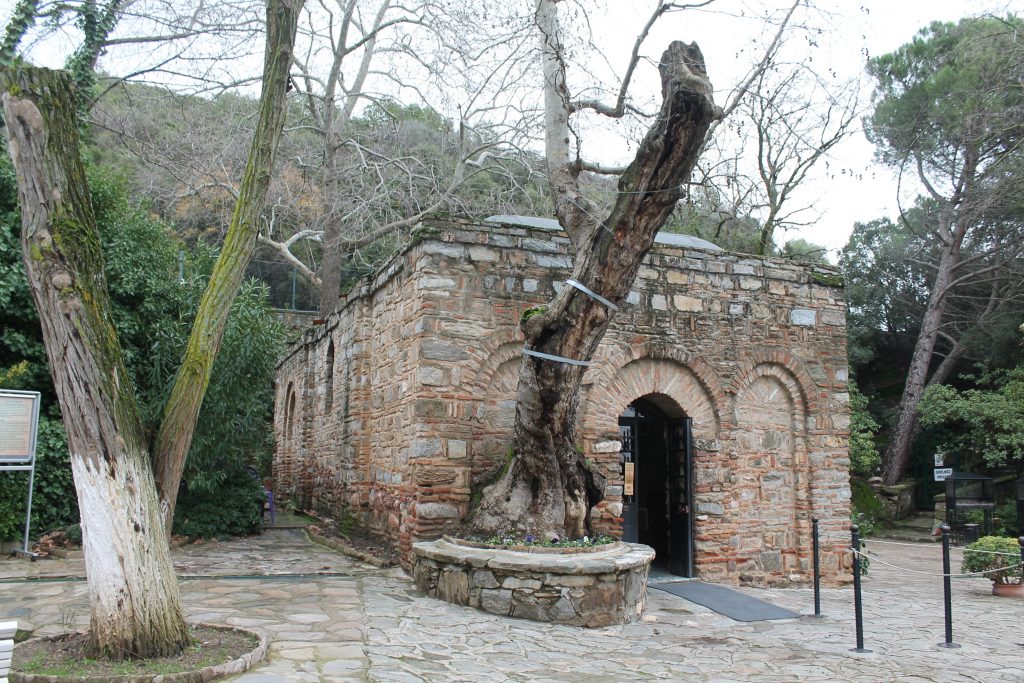
The burial site of John is located in the Sixth century Basilica of St. John. According to tradition, he returned to live here after his exile to Patmos where he had composed the seven letters of Revelation, including the letter to this city, and Ephesus is the place where he finally died of old age.
Your Seven Churches of Revelation Tour facts: Visiting Ephesus
Visit the official site for Ephesus opening times and costs.
2. Smyrna
The archaeological site of Smyrna lies in the centre of the modern city of Izmir. You can see the flags at Alexander the Great’s “Velvet Castle” atop the hill. Many formerly key sites hold only ruins now, so why does Izmir remain in use? The harbor is key. Izmir remains an important sea port, with a sheltered bay offering access to the Aegean and the Mediterranean beyond. Meanwhile, the harbor at Ephesus is among many that silted up over time, costing the city its prominence.
The site centres on the Agora of Ancient Smyrna. The agora was the central square and gathering place in Hellenistic cities, and Smyrna’s was first established in the 4th century BC. It was later the centre of the Roman city.
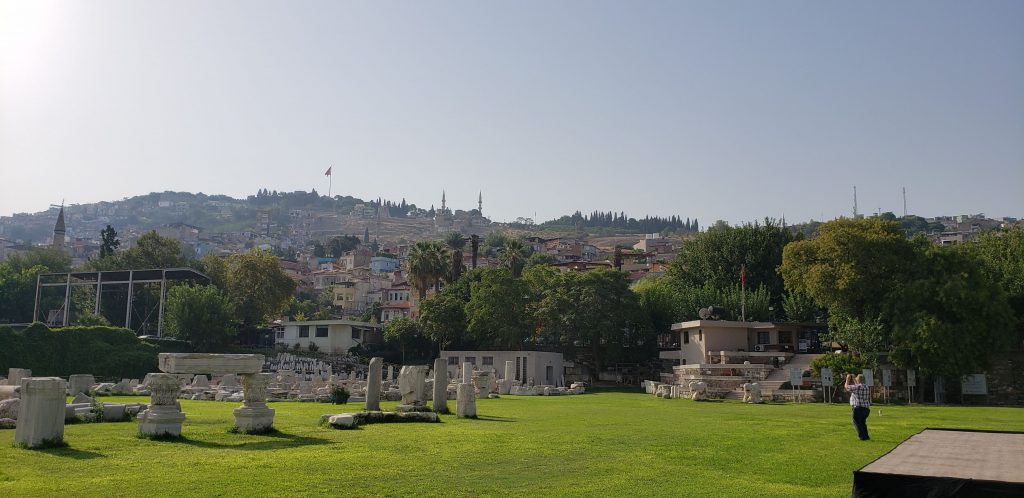
The cryptoportico (arches supporting structures above) offers some insight into how this multi-levelled site would have worked. Down here, reconstructions of the ancient channels show how water was managed. And you can even try the replica fountain!
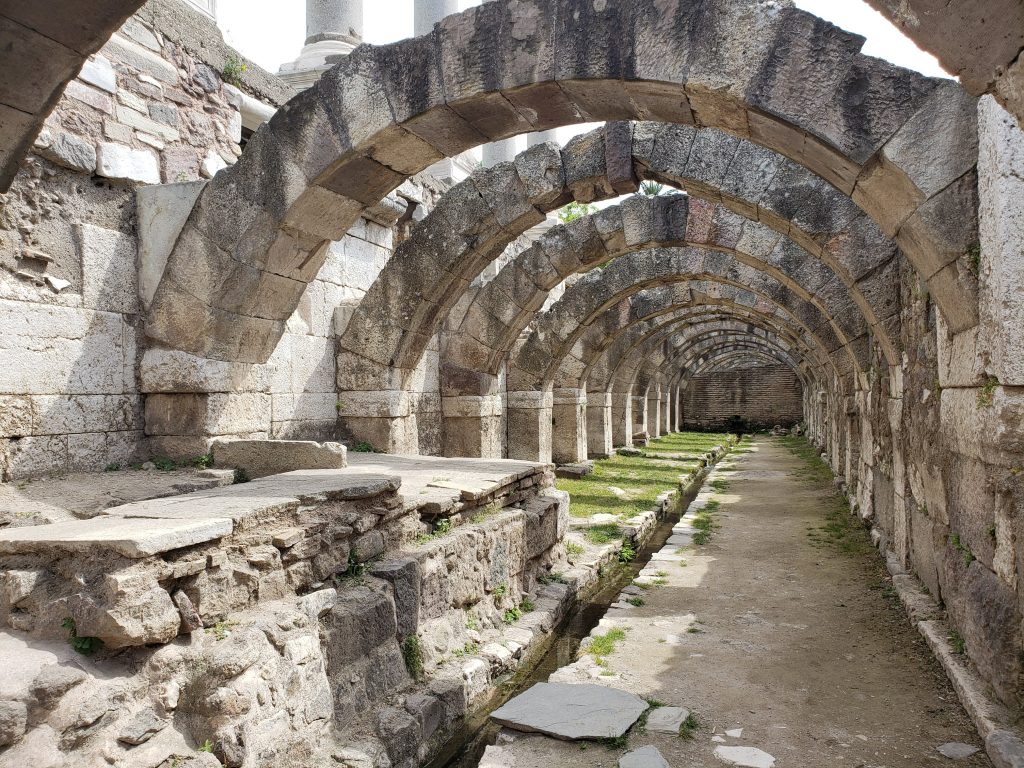
As well as being well-managed, Smyrna’s reputation brought it the great honour of being named Neokoros – a city allowed to build a temple in the name of the Roman Emperor – not once but three times.
St Polycarp’s Church
Before leaving Izmir (the modern name for Smyrna), take a peek inside St Polycarp Church, dedicated to the bishop and martyr of the church of Smyrna!
Though Christianity flourished in this region of the world for almost a millennia, and was even the official state-sponsored religion after Constantine and during the Byzantium period, you’re probably more likely to find ruins of church buildings in archaeological sites than you will find active congregations today. In fact, out of all of the cities that contained the famous Seven Churches of Revelation., only one of them has any active Christian churches left. The Church of Smyrna (modern Izmir) is the last Church standing, so to speak, of the original seven. While in Izmir, you may be able to visit one of these churches.
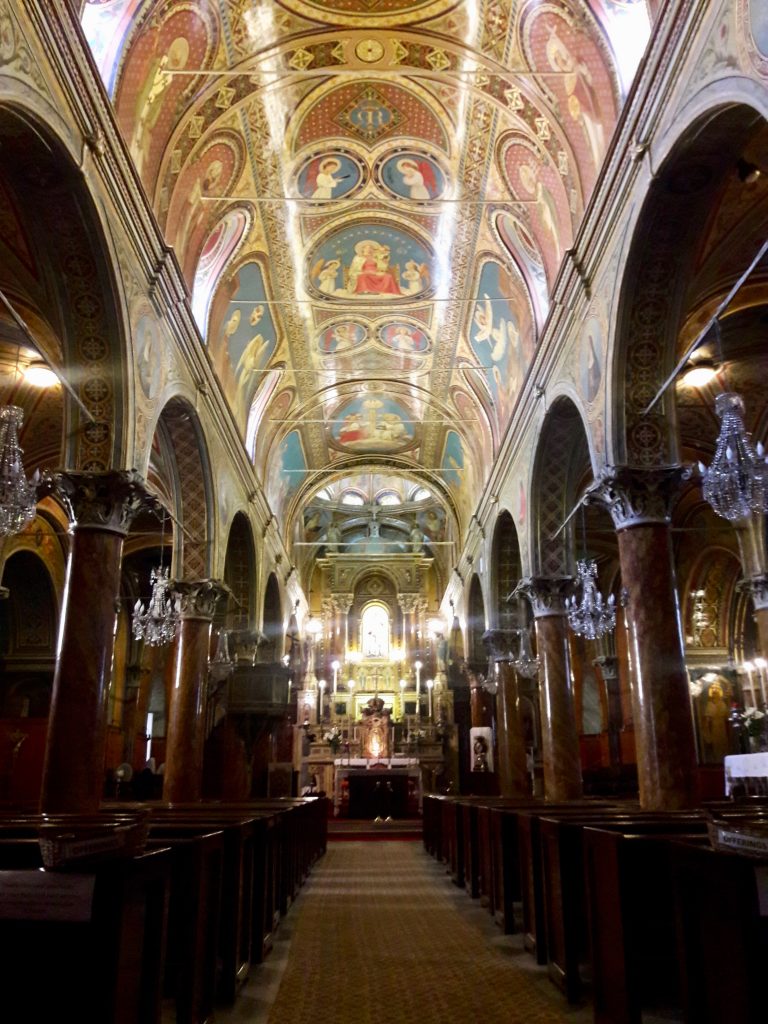
This one was named for the early Christian martyr Saint Polycarp. Said to be a disciple of the Apostle John who made him the bishop of Smyrna, Polycarp is one of the earliest Christians whose writings have survived. After an unusually long life, Polycarp was eventually martyred. All because he refused to worship the emperor by burning incense to him. The relationship of the early Christians to the Roman Empire is a recurring theme in Revelation and was a consistent issue that they wrestled with.
Your Seven Churches of Revelation Tour facts: Visiting Ancient Smyrna
Visit the official site for Smyrna opening times and costs.
3. Pergamum
Pergamum, along with Ephesus, is one of the most impressive archaeological sites in all of Turkey. It’s known and remembered for much more than its early Christian community, even though it was one of the Seven Churches of Revelation. Indeed, it’s a must-visit site for anyone passing within striking distance of modern Bergama. Its attractions are hard to surpass: a 10,000–seat theatre on the side of the Acropolis; the magnificently restored Temple of Trajan; the remains of a library of 200,000 volumes second in size only to that in Alexandria; the base of the Altar of Zeus; the Temple of Dionysus; and the medical center of Asclepion. This ancient healing center even had its own theater, library, underground tunnel and other buildings.
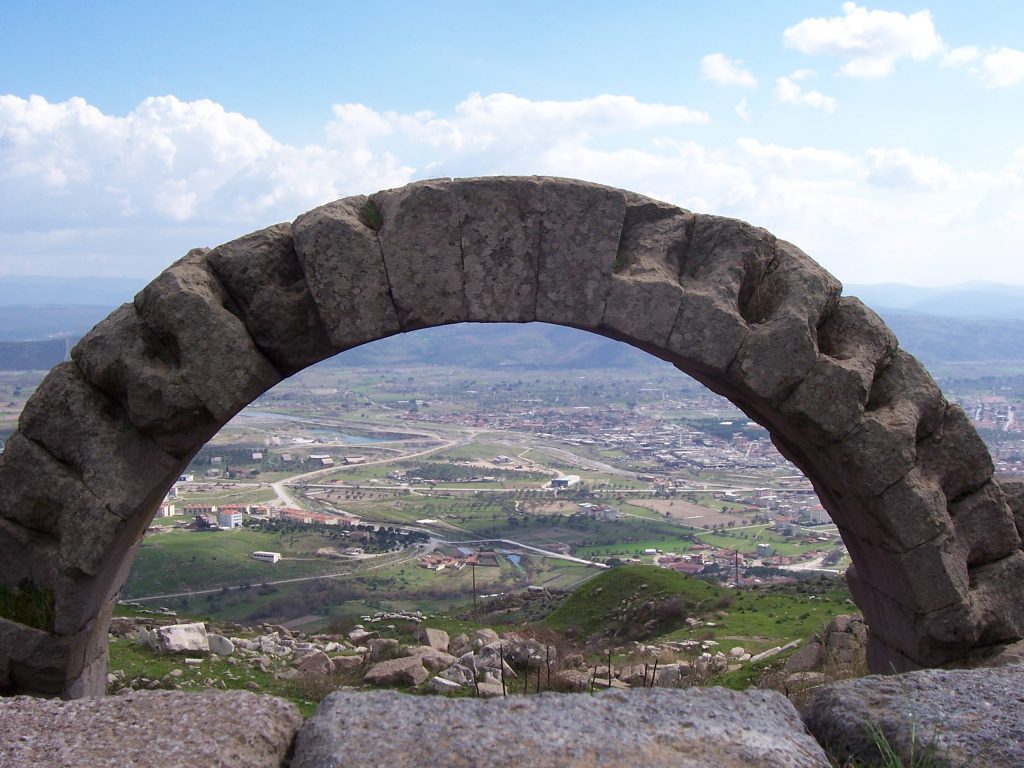
Take the cable car to the top of the site to tour the Acropolis and enjoy its outlook. The natural setting and its spectacular views are a highlight of any visit, quite apart from the extraordinary ancient city.

Pergamum had the steepest theater in the ancient world. The Hellenistic actors performed plays on a temporary wooden stage later stored away to restore the view of the temples below. However, the Romans were a bit less aesthetically-minded about it and used to hold political assemblies here!
The Library of Pergamum
The great library of Pergamum preserved many works that were lost in the burning of Alexandria. It was an incredible collection of knowledge, and with 200,000 volumes it was the largest library in Asia, and in the ancient world was second only to the famed Library of Alexandria. The Attalids’ goal was to create a second Athens, a cultural and artistic hub of the Greek world. Due to the authors wandering around the stoas (colonnaded galleries) while chatting and proclaiming philosophically, the library is regarded as one of the centers of Stoicism.
The quick development of the library outraged Alexandrians who had the only writing-material-worthy papyrus plant and the largest library of the period. Disapproving of Pergamum’s expansion, the Egyptians quit sending papyrus to Anatolia. But since the librarians here popularised the use of animal skins as parchment, it didn’t seem to slow them down too much. Still, it proves that academic rivalry is not an innovation of modern scholarship!
The Asklepion
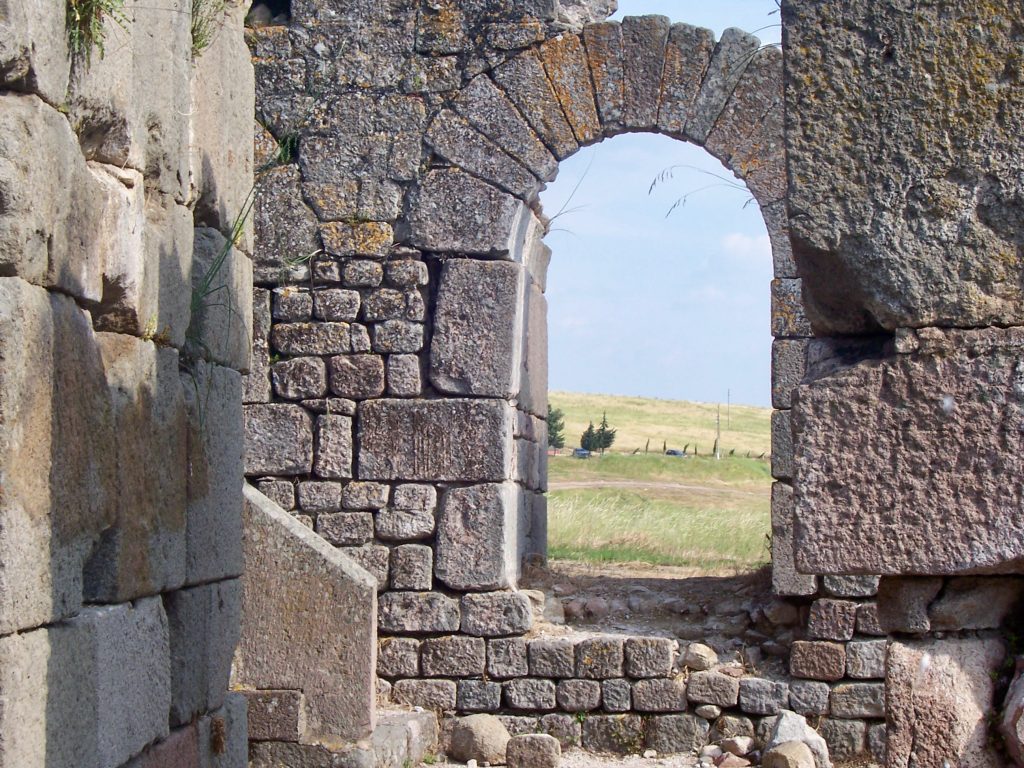
Not far away is the Asklepion, Pergamum’s ancient healing center. The site evokes its second-century heyday, when the influential physician Galen plied his trade here. His ideas remained the basis of Western medicine until the late mediaeval period! Patients would have their dreams analysed, alongside treatments such as hot and cold baths and sunbathing. The healing center was named after Asclepius, and if you want to know more about him and his snake symbols, check out our blog post here!
Your Seven Churches of Revelation Tour facts: Visiting the Sites of Pergamum
Visit the official sites for Pergamum opening times and costs:
4. Thyatira
You can drop in on Thyatira, where due to the presence of the modern city of Akhisar, few archaeological remains have thus far been uncovered. What there is, though, is well worth seeing. It was an early Christian center and had a continuous church presence right up into modern times. Thyatira had more guilds than anywhere else in the province of Asia.
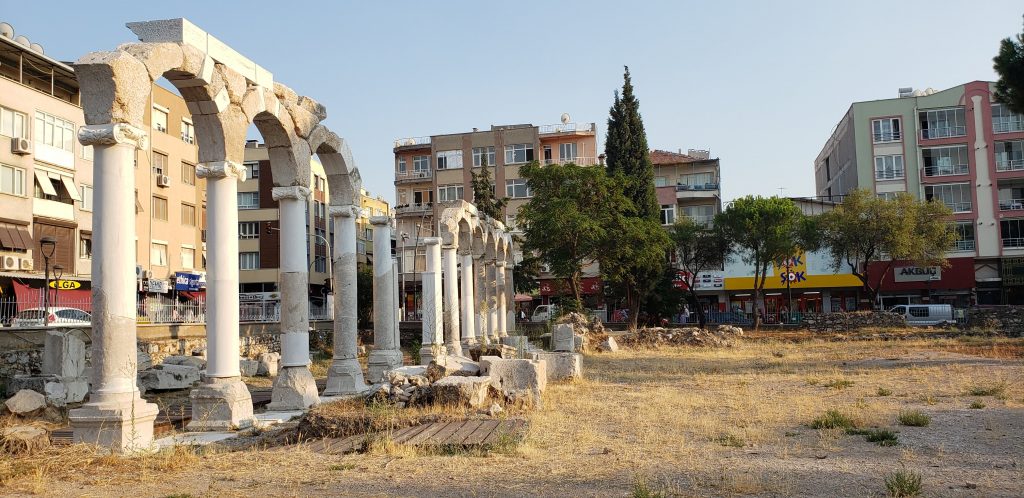
This is a very different site to hilltop Pergamum, down in the valley where the road ran and more vulnerable. But this made it a trade centre, with many guilds and a prestigious cloth dyeing industry. Here they made the famous purple cloth, reserved for Roman Imperial families – “born into the purple”, as they said. The dye was made from sea snails, but there are only regular snails to be found there today! Thyatira is still in an urban centre, which means that there’s less excavated here than elsewhere. But it’s interesting enough to be worth a stop. Especially if you’re interested in understanding the differences between the various Seven Churches of Revelation.
5. Sardis
Our next stop is Sardis. Here, we’ll see the remains of the magnificent temple of Artemis (later converted into a church), the beautifully reconstructed gymnasium and public baths, and the largest known synagogue outside ancient Palestine.
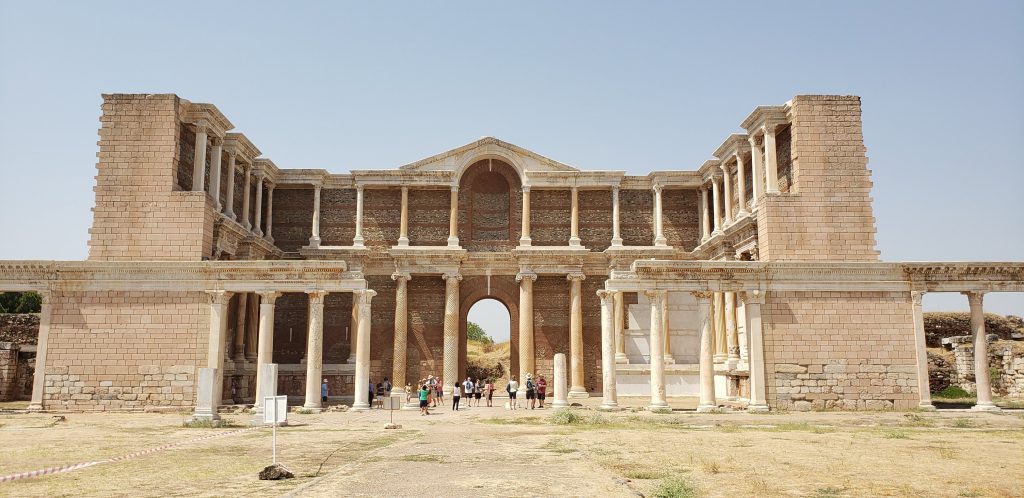
Sardis is a 3000-year-old city built on a natural citadel. When the Persians captured Asia Minor, Sardis was part of the kingdom of Lydia. In those days Sardis was a wealthy city and its combination of rich surrounding farmland and alluvial gold made Lydia a powerful kingdom. In 546 BCE, the Persians made it the administrative center of the region and the base of their satrap (governor).
From the time of Alexander the Great, Sardis became more Hellenized and was a major Greco-Roman centre with a Temple of Artemis, theater, stadium, and public baths. The ruins of the Marble Court from the Bath-Gymnasium date from around AD 211-212 and their reconstruction is spectacular!
Jewish Sardis and its Synagogue
The relationship of the early church to their Jewish brothers and sisters – many of the early Christians themselves, of course, being Jewish – is a theme in the letters to the Seven Churches of Revelation. Sardis had a significant Jewish population as early as the sixth century BC. The synagogue, discovered in 1962, is the largest known synagogue outside Palestine. In fact, the main hall could have held over a thousand people! The collonaded forecourt would have been open to the sky, but pillars held a roof over the main hall at a height of fourteen meters. The synagogue occupied part of the main gymnasium complex, at the center of civic life.
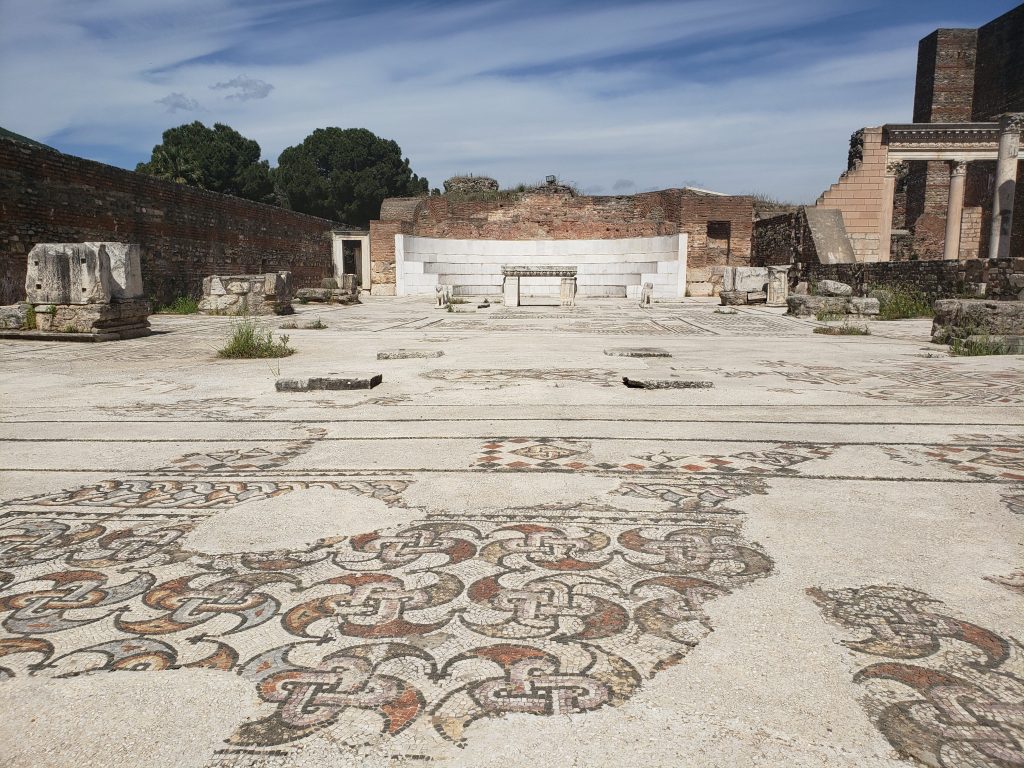
In the main hall there were benches in the curved apse behind the altar, where synagogue elders would have sat (according to similar arrangements seen in Roman Palestine). Two fourth-century brothers donated the mosaic wall, which covered up the earlier openings.

To either side of the main entrance are the shrines that would have held the Torah scrolls; the platforms were discovered and restored during the excavation.
Your Seven Churches of Revelation Tour facts: Visiting Sardis
Visit the official site for Sardis opening times and costs.
6. Philadelphia
Philadelphia! Much of this ancient city has either been destroyed or lies buried under the modern city of Alaşehir. John wrote to the church here (Rev. 3:7–13) as one of the Seven Churches of Revelation, commending them for their patience endurance in spite of persecution.
The city lies on higher ground surrounded by fertile plains. The rich volcanic soil allowed the cultivation of grape vines but also reveals the seismic volatility of the area. Throughout the ancient period, Philadelphia was beset by earthquakes, one of the worst bringing its destruction in AD 17. Imperial help from Tiberius helped the rebuilding.
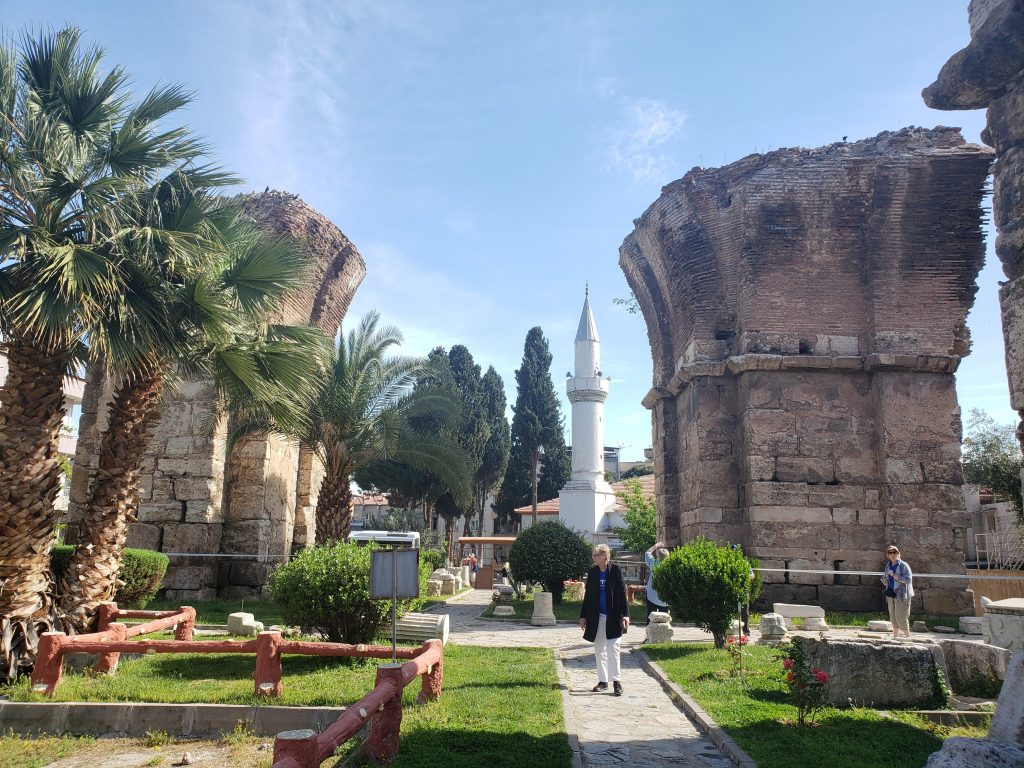
These remains give a great insight into how the builders constructed these arches and domes. Indeed, this type of arch is typical of the late Byzantine period, and the remnants of the basilica date from this period. Its construction took place in the early seventh century.
So why was Philadelphia named the “city of brotherly love”? Philadelphia was founded during the Roman period by the Lydians, but quickly became a Roman Imperial city. Lydian king Eumenes II of Pergamon founded the city and named it after his brother and successor Attalus II Philadelphus, whose moniker of “brotherly love” reflects the brothers’ dedication to each other. Attalus declined Roman offers of help to overthrow his brother and they seem to have been the rare happy family among ancient rulers! Ultimately, Eumenes’ son Attalus III was the final Lydian king of Philadelphia. Having no heirs, he left his kingdom to Rome, hoping to avoid war when the Romans inevitably tried to take control of an available city.
Your Seven Churches of Revelation Tour facts: Visiting Philadelphia
Visit the official site for Philadelphia opening times and costs.
7. Laodicea
Because Laodicea was located on the great road to the East at a point where three roads met, it was a crossroads trade center. Ancient Laodicea had not one but two theatres, a stadium, an aqueduct, and over 20 churches dating to Byzantine times that archaeologists have already uncovered. This is the last of our Seven Churches of Revelation, but don’t worry – there are so many amazing ancient sites and natural wonders in the surrounding area!
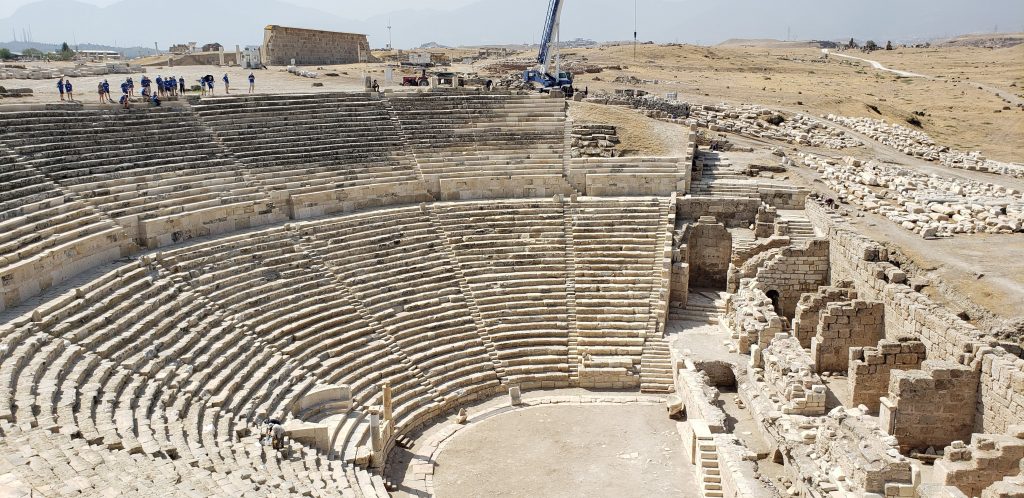
This view is great for showing the scale of the theater – check out the teeny tiny humans around the top! It also demonstrates how many theaters had a large wall at the back of the “stage” area. Additionally, it might even bear portraiture or inscriptions dedicated to those who sponsored its construction.
Laodicea was especially noted for three things. First, it was a banking and financial center. Second, Laodicea was a center of textile manufacture (they had a lot of black wool and the knowledge to transform it into cold, hard cash). Third, Laodicea was also a medical center. Remember the snakes? Check out our blog post on Asclepius!
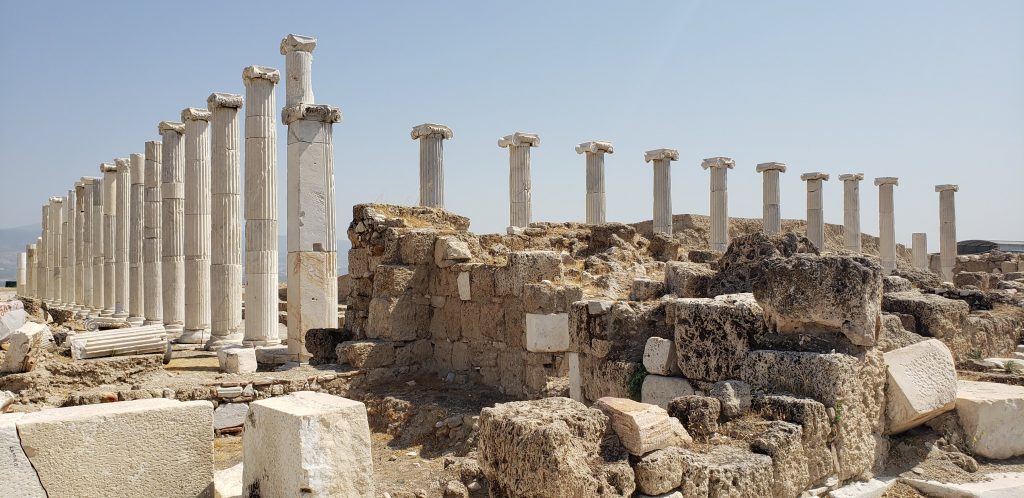
Laodicea was even so wealthy that, after being destroyed by an earthquake in A.D. 60–61, it refused help from Rome and financed its own rebuilding (Tacitus, Annals 14.27)!
The site is especially fascinating as it is a live excavation site and archaeologists are constantly uncovering new things. New homes and public buildings are waiting for anyone who visited more than a few years ago, and you can compare the restored and unrestored theaters. On the most recent WorldKind visit, a new portion of the site on display contained bright public art from the agora!

Your Seven Churches of Revelation Tour facts: Visiting Laodicea
Visit the official site for Laodicea opening times and costs.
Seven Churches of Revelation Tour
We hope you’ve enjoyed this overview of the sites. If you make it to the churches of Asia, do let us know how you liked it!

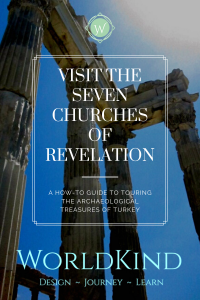

Outstanding. I learn more reading your blog than what I remember hearing. Perhaps reflecting, my learning style, I have learned much. Thank you.
Having read this I believed it was extremely informative.
I appreciate you finding the time and energy to put this information together.
I once again find myself personally spending way too much time both reading and leaving comments.
But so what, it was still worthwhile!